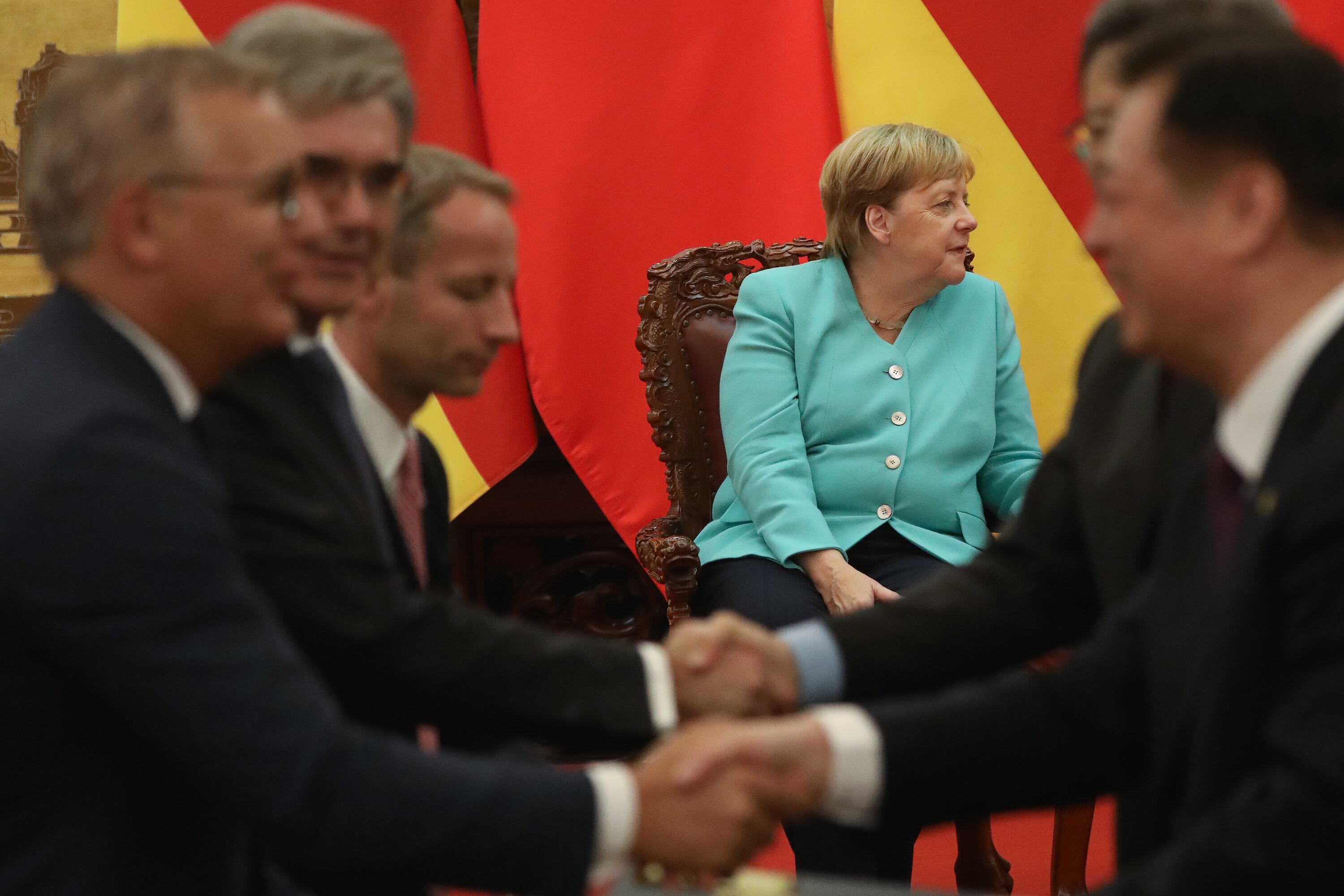STUTTGART, Germany — The German Air Force is preparing to send fighters, tankers and transport aircraft across the world to the Asia-Pacific region in a little less than a year, as its colleagues in the European Union continue to assess how the bloc should increase its involvement in the region.
The Luftwaffe will deploy six Eurofighter aircraft, three Airbus A330 tankers and three A400M transport aircraft in support of Australia’s Pitch Black exercise, scheduled for Sept. 5-23, 2022. The typically biennial exercise was canceled in 2020, and next year’s edition will be the first since 2018.
Germany is ready to play a bigger role in the Indo-Pacific region, and will start with this initial sortie next fall before developing a more long-term plan, said Air Force Chief of Staff Lt. Gen. Ingo Gerhartz.
This is the Air Force’s “first and biggest deployment” of air assets to the Asia-Pacific region, Gerhartz said in an interview with Defense News in October at the Luftwaffe’s Neuburg Air Base in Bavaria.. “It’s a strong signal to show our valued partners in the Indo-Pacific that we are with them.”
The main hub for the 2022 deployment will be Australia, but details about the actual bases have yet to be confirmed, the Air Force said.
The service also wants to integrate Singapore and Japan into the deployment exercise, a spokesperson wrote in an email to Defense News.
Gerhartz expects to meet with some of his counterparts in the Indo-Pacific region in November during the Dubai International Air Chiefs Conference, and will make additional plans afterward.
This air deployment would follow the August 2021 deployment of the German Navy frigate Bayern. The ship is to spend six months at sea, with stops planned in 12 different ports including in Djibouti, Karachi, Diego Garcia, Perth, Guam, Tokyo and Shanghai. However, news outlet Deutsche Welle reported in September that China rejected the planned Shanghai stopover “after a period of reflection.”
RELATED

For now, Gerhartz is focused on planning the 2022 exercise, although he did not rule out the possibility that German air assets would return to the Indo-Pacific theater. “I cannot foresee if there will be a permanent presence,” he said. “But for me, it cannot just be: One year we are there, and then we are out.”
A longer-term strategy may hinge on Berlin’s new coalition government between the Social Democrats, the Greens and the Free Democrats, as well as how the leaders of this new center-left government decide to approach the Indo-Pacific region.
Such a deployment will be useful for Germany’s Air Force to hone its strengths, said retired U.S. Army Lt. Gen. Ben Hodges, who serves as the Pershing chair in strategic studies at the Center for European Policy Analysis.
“It’s useful for the German Air Force to do this to grow their own capability,” he told Defense News. “You have to do some missions like this, where you go to the other side of the world.”
But European allies could assist its U.S. and Indo-Pacific partners more fruitfully by developing a “cohesive, cooperative approach towards the Chinese Communist Party in terms of diplomacy and economic power,” he added.
The Air Force’s deployment exercise is based on a series of policy guidelines for the region published by the German government in September 2020.
“With the rise of Asia, the political and economic balance is increasingly shifting towards the Indo-Pacific,” the Luftwaffe spokesperson said. “The region is becoming the key to shaping the international order in the 21st century.”
A year after the policy guidelines were published, the objectives are beginning to be met, Germany’s Foreign Office said in a September 2021 brief.
During Germany’s presidency of the Council of the European Union, the bloc’s Asia relations were upgraded “to the level of a strategic partnership in December 2020,” the brief stated. The nation has also extended its relationships with Australia and Japan, while opening up a regional German information center to expand public communications in the area.
The EU published its first Indo-Pacific strategy in September 2021. From a security perspective, the strategy noted the union’s plans to deploy military advisers to EU delegations in the region — currently to China and Indonesia — and to establish an EU cyber diplomacy network. The strategy highlighted cybersecurity; counterterrorism; nuclear safety; nonproliferation of nuclear, chemical and biological weapons; and information manipulation as security challenges where the EU wants to work more closely with its Indo-Pacific colleagues.
Besides Germany, France and the Netherlands are the only other European nations to publish their own regional strategies. Paris first published strategies in 2018 and 2019, while Berlin and Amsterdam followed in September and November 2020, respectively.
Vivienne Machi is a reporter based in Stuttgart, Germany, contributing to Defense News' European coverage. She previously reported for National Defense Magazine, Defense Daily, Via Satellite, Foreign Policy and the Dayton Daily News. She was named the Defence Media Awards' best young defense journalist in 2020.






